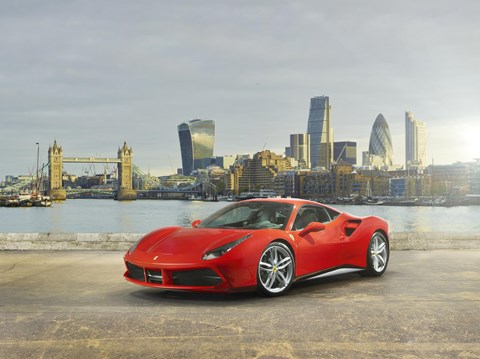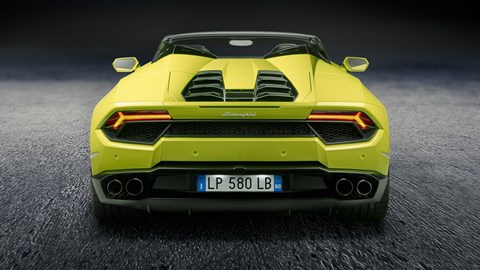► P1 supercar club relaunches
► Damon Hill’s bid to close it fails
► How to rent a supercar for buttons
The P1 supercar club is back. As reported by CAR Online in spring 2009, P1 ran into financial difficulties, but the company has emerged from administration and founder Michael Breen is relaunching the P1 supercar hire club this autumn.
Breen hopes to attract customers back with the offer of some mouthwatering supercars, with the Ferrari 458 Italia, McLaren MP4-12C and Mercedes-Benz SLS all on the order books or in the pipeline. The new P1 club has a fleet of 30 supercars and premium models and has kept 50 of its most loyal members. Before P1 collapsed into administration, it had a peak of around 240 members in the boom years.
What happened to the P1 supercar club?
There’s been a whopping great global recession, in case you hadn’t noticed. P1, which was Britain’s original supercar club, was struggling to repay asset finance repayments of £100,000 a month to fund its fleet of droolworthy cars – and nobody would buy supercars when P1 tried to sell. The market for top-end cars had frozen at the exact time that P1 most desperately needed the dosh.
Eventually the banks called the loans in, as they had identified the supercar market as wobbly business they didn’t want during a banking crisis. Breen was petitioned by Damon Hill to wind up P1, but that was rejected by the courts. Instead, he put the supercar club into administration while he sought new funding from investors, eventually buying the business from the administrators in August 2009.
The new P1 will be a more secure business, Breen told CAR Online, as it won’t own every car outright as before. The club’s most popular cars, such as the Aston Martin DBS, Nissan GT-R and Ferrari 430 Spider, are owned directly by P1, but many of the other models – like Range Rover Sports and Porsche Cayennes – will be rented in from external suppliers.
So supercar clubs face a rosy future?
Well, there’s no arguing with Breen’s financial argument. ‘Say an average supercar costs around £150,000 – you’ll typically lose 30% of that in the first year, on top of £5000 for insurance and £2000 for a service,’ says Breen. ‘That’s a £52,000 cost in a year, or £26 a mile when you remember the average mileage for a supercar in the UK is 2000-3000 miles. P1 lets you enjoy access to a supercar with none of the risk.’
P1 has maintained its rates and introduced a new, lower entry membership called Spa which costs £9250 a year. The Monza package costs £12,250 annually and the top-dog Monaco pack £14,250. Each brings more ‘points’ which members can trade against better cars and longer loan periods.
Did members lose out when P1 collapsed into administration? ‘Some members did lose money,’ admits Breen. ‘But the first thing we did was to offer them all their tier points back when they rejoined. If they come back they will be able to transfer all their benefits and unused mileages on top of their new annual quota.’
Read on for archive stories detailing P1’s financial affairs in the aftermath of the financial crisis

How we reported the P1 club’s brush with administration
Story originally published 18 March 2009
Former F1 motor racing champion Damon Hill is mounting a legal campaign to close the P1 International supercar club he founded, it emerged today. Solicitors representing Hill argued their case at 10.30am this morning in the High Courts of Justice in London.
Hill claims he is a creditor owed money from P1 International and is seeking to wind up the supercar club through the courts. Under British law, a company may be wound up voluntarily if it cannot pay its creditors – but may also be wound up by order of the court on the petition of a creditor.
The financial details of the case remain secret and Hill’s solicitors declined to comment on the case. CAR Online contacted Michael Breen, co-founder and chief executive officer at P1 International Ltd, late this morning but has yet to hear back from him.
P1 International supercar club: the background
P1 was founded nine years ago and pioneered the supercar club business model in the UK, buying expensive high-performance cars and letting members drive them for selected dates by paying an annual membership fee.
Breen recently told CAR that P1 had 300 members, two branches and more than 40 cars. He told us: ‘In the last four to five months there’s definitely been a downturn in business, but an upsurge in inquiries. People have been taking back deposits on supercars and thinking cautiously about using the money for a membership instead.’
But the global financial crisis – and the cutbacks among previously affluent City types – has already taken its toll on P1’s rivals. Seagrave, Group 20 and Club Velociter have all folded in the past year.
We would like to make clear that P1 is still currently trading, pending the court case.

How we reported the failure of Damon Hill’s legal case to wind up the P1 supercar club
Story originally published 20 March 2009
Damon Hill’s bid to wind up the P1 supercar club in the High Courts of Justice has been rejected – for now. The former F1 world champion is pursuing money owed to him and issued a petition to close down P1 to pay the debt.
But Hill’s co-founder of P1 International, and current chief executive officer, Michael Breen told CAR Online that the petition to wind up his business had been unsuccessful.
‘I have been advised that I cannot go into the detail of the case but I can confirm that Damon Hill’s petition was unsuccessful on Wednesday,’ he told CAR. ‘We will be back in court next week.
‘We are still trading and our members are still collecting and driving their supercars as normal.’
P1: the original supercar club
P1 pioneered the supercar club back in 2000 – democratising supercar ownership by creating a members’ club where owners paid to have a predertimined number of days access each year, with none of the costs and hassles of ownership.
It now has around 300 members, two branches and some 40 supercars.
CAR: What’s supercar club Ecurie25 doing about the economic downturn?
Chirag Shah: ‘Several supercar clubs started up in the last couple of years and, with no chance of growing their membership base in the current climate, have decided to fold. Only clubs with over 100 members who can retain their membership at or around their current levels can be expected to survive this downturn. ‘
But aren’t people tightening their belts?
‘We introduced a monthly payment plan, avoiding the need for members to be concerned about lodging a large amount of money with the club at any time. Obviously that affects our working capital, and so we raised additional funding from our investors just before Christmas to enable us to support this initiative.’
What are your plans for the club in the next six months?
‘Ecurie25 is taking advantage of the downturn in property prices to make some overdue improvements to the club. First of all, we have moved to new premises in King’s Cross where we have our own clubhouse with space for up to 30 cars in a much more accessible location. We’re also launching vehicle owner’s packages – so our members can earn some much-needed income from their own supercars. Later in the year, we have plans to open more Ecurie25 branches in other cities.’
How is demand holding up?
‘Obviously selling memberships is tougher these days. Fortunately, Ecurie25 has been both pro-active in responding to the economic climate – as early as July of last year we merged with another London based supercar club called Quadriga Club and gained a number of new members as a result of this and we have also gained members from the demise of both Group20 in September and Segrave Club in October. As a result, our membership base has actually grown since June 2008 and in fact we are currently at the highest level of membership that the club has ever enjoyed.’
So people are still joining?
‘I don’t really know why but February 2009 was also our best month in signing up new members for over a year. With supercar values dropping through the floor and people being unsure about their own financial security, getting their adrenalin fix via a club rather than buying makes more sense than ever.’
And which cars are Ecurie25 getting hold of in 2009?
‘We brought in a Lamborghini LP560-4 in January. Joining us in a few weeks will be the brand new 503bhp Jaguar XKR. And obviously the must-have car for this year will be the Ferrari California – our order date is in August but in the current climate we are hoping to get one much sooner than that. We also have a few secrets up our sleeve – we can’t give away too much, but let’s just say not all the cars will run on petrol!’